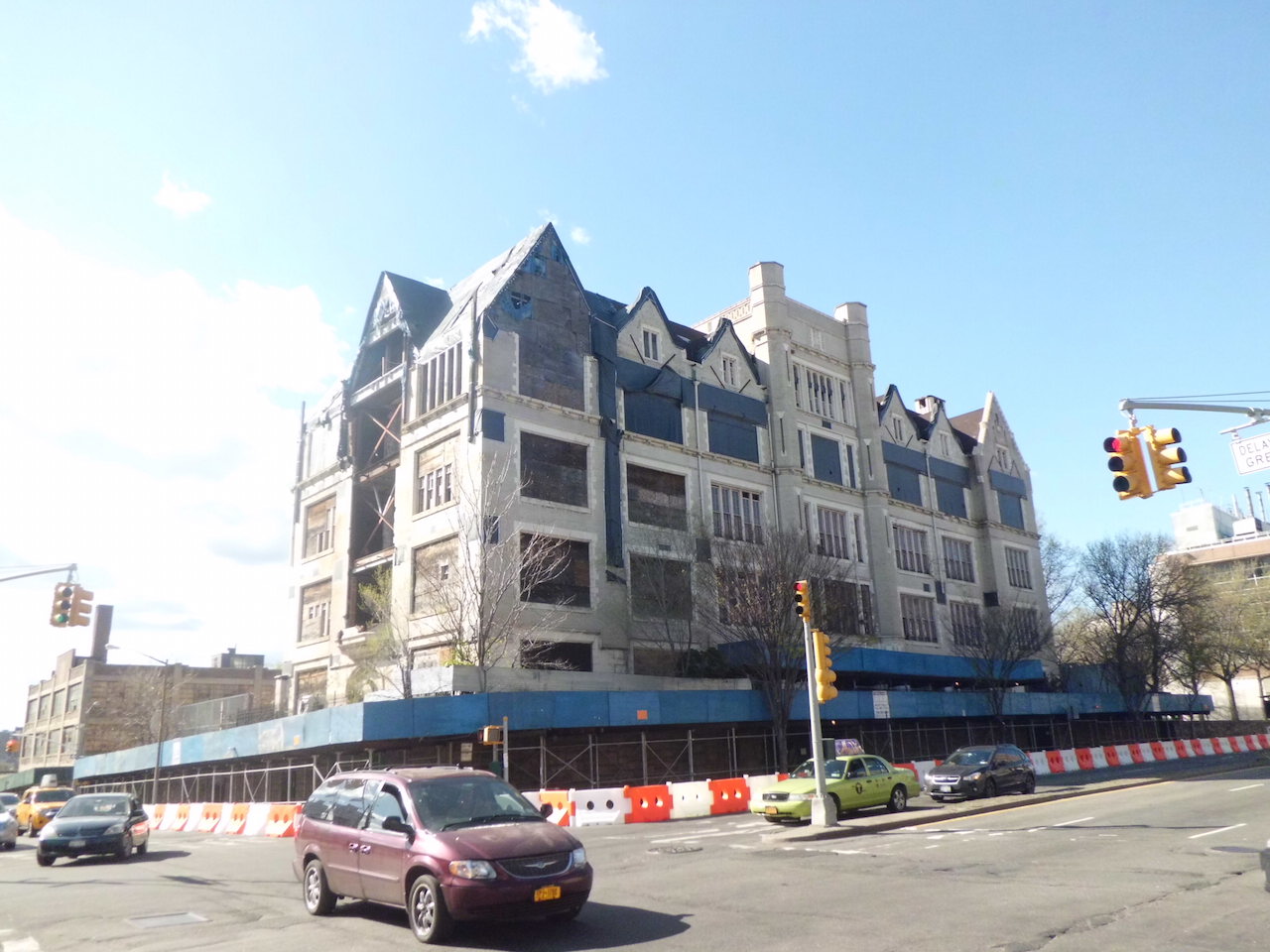
As city plans to demolish PS 31, residents want to know what will replace it
In 1951, when Hope Friedland was nine years old, she wrote an ode to Public School 31 on the Grand Concourse, the school she attended at the time. She wrote:
Oh 31, you stand so true
Above the rest you shine,
Your towers reach high into the sky,
You look so very fine.
Friedland’s poem reflects a sentiment shared by many former students, teachers, residents and public officials about the building dubbed the Castle on the Concourse, which housed P.S. 31 from 1899 to 1997. She said that when she drives south on the Major Deegan Highway with her family, she tells them to look past Yankee Stadium to pick out the outline of the abandoned school.
“People don’t realize that they are looking at a castle,” she said. “It’s one of these historic buildings that shouldn’t come down. It’s a fixture in our skyline.”
But the five-story building, a symbol of Collegiate Gothic architecture that was designated a landmark in 1986, faces demolition some time in the next few weeks, after city engineers said damage that has occurred over years of neglect is so significant that renovations would be useless. Nowadays the building is surrounded by scaffolding and displaced bricks. Its Tudor-style, arched doorways have eroded over time, and its classrooms are empty.
Many of the residents who have urged the city to save the building since the 1990s are resigned to the fate of their beloved school coming down, but remain anxious over the fate of the parcel of land it sits on. Mott Haven is on the cusp of a building boom and they want guarantees the needs of the neighborhood aren’t as neglected as they say the building itself has been.
Mott Haven-based community development organization, SoBRO, has fought to keep the old school from being demolished many times over the years, said Michael Brady, the group’s Director of Special Projects and Government Relations. Now that large-scale building projects are being planned across the neighborhood, he said, the parcel is likely to get snapped up quickly.
“A developer will scoop it up, that’s the MO for any development that’s happening right now,” he said.
A team of engineers hired by SoBRO in 2010 to inspect the building found it to be safe enough to shore up with an eye toward future renovation. They then enlisted Goldman Sachs, which agreed to invest $4 million to restore the façade, with the hope of adding commercial retail and affordable housing.
But the city’s engineers put the brakes on the project. The Department of Building’s assistant commissioner Timothy D. Lynch told the community board at a 2013 meeting that the building was in “pitiable condition,” calling for it to be demolished to avoid disaster. That signaled the end of the city’s willingness to entertain any plans for keeping the building standing.
Some residents argue the city was never interested in investing in needed repairs because the building is in one of New York’s lowest-income neighborhoods, but that they would have moved to save it if it were in a wealthier area. Last year, blogger and Melrose resident Ed Garcia Conde, collected 1,500 signatures on a petition urging the city to respect the building’s landmark status and keep it standing. He wondered if the city intentionally ignored the structure, with the unstated aim of eventually selling to the highest bidder.
“With the exception of that parcel, the entire surrounding area had been redone [rezoned] in 2009,” he said.
Peg Breen, president of New York’s Landmark Conversancy, said the city botched its responsibility.
“The city’s engineers didn’t have experience restoring historic buildings,” she said, adding that the landmarks commission would have sued if the property had been privately owned.
“The City can neglect its own landmark properties with impunity,” said Breen.
The district manager of Community Board 1, Cedric Loftin, said the board had pushed for the city to restore the building and repurpose it as an educational center. Now that demolition is inevitable, he said, the city should take the neighborhood’s needs into account when it builds new housing instead.
“We will look at the existing needs in the community and take into consideration the future increase in population,” said Loftin.
According to the Department of City Planning, the Bronx is projected to see the highest population growth of the five boroughs by 2040.
The press secretary for the city’s Department of Housing Preservation and Development, Eric Bederman, wrote in an email that that agency will issue a Request for Proposals for developers, requiring that prospective builders include affordable, mixed-use housing at the core of any plans. The department will work with the community and elected officials to ensure Mott Haven’s needs aren’t ignored, he added.
Shortly before the end of 2014, the group that developed Chicago’s Sears Towers, the Chetrit Group, bought adjacent parcels a short distance from the Castle on the Concourse, with plans of converting those into residential towers. Although SoBRO would be interested in working with the same group to develop the parcel once the historic school is taken down, Brady said, the needs of Mott Haven’s residents must be considered first.
“There will be a public process first,” he said. “The city really needs to do a community needs assessment of what’s actually in that area.”


[…] that the city has demolished PS 31, the landmark school on the Grand Concourse, the department of Housing Preservation and Development […]